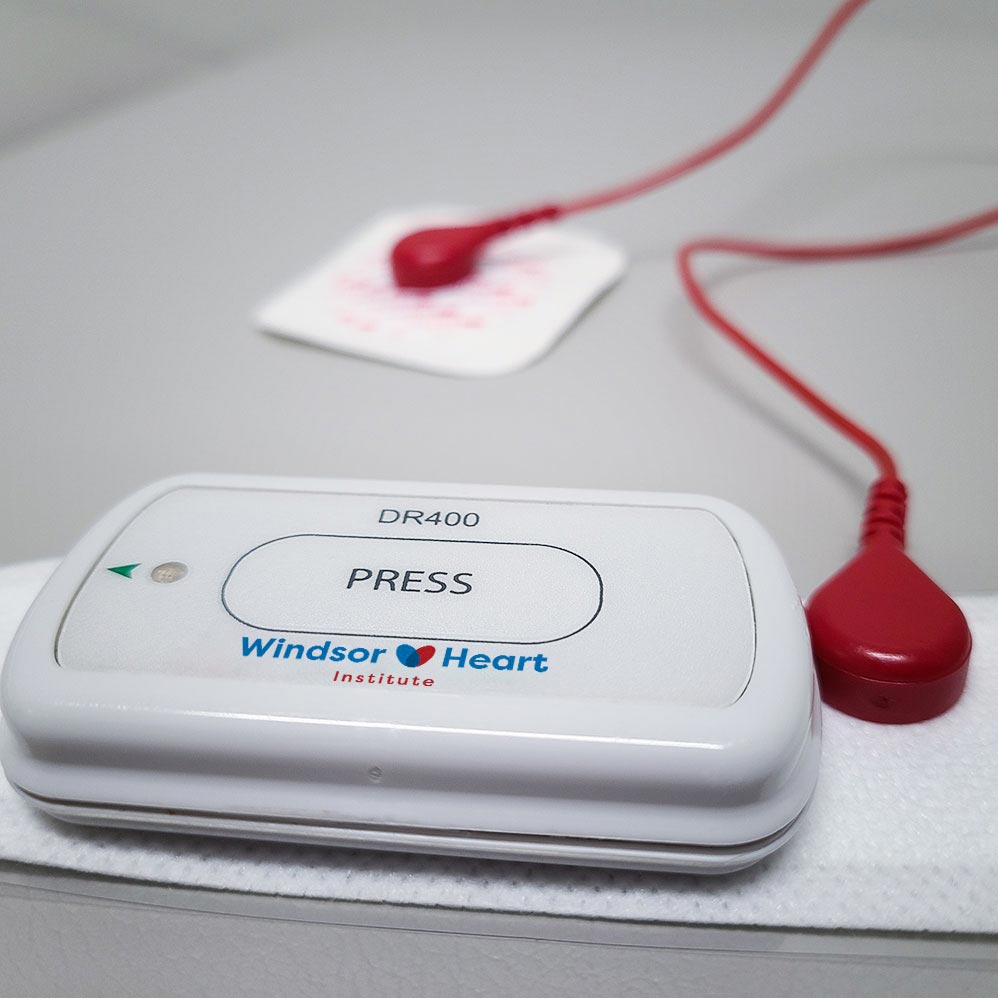*Please note that due to certain extenuating circumstances and demand, walk-in services may not always be immediately available and, on occasion, will be subject to the next availability.
Holter/Loop Monitoring
A Holter/Loop Monitor is a device that records the electrical activity of your heart for a specified period of time to detect any abnormal heart rhythms.
Why Get a Holter/Loop Monitor?
- Document when you feel any abnormal heart rhythms (racing or slow heartbeat, extra beats, etc.).
- Evaluate what changes your heart rhythm goes through while you go about your normal daily activities.
The appointment will take approximately 15 minutes*.

The monitor is a small, portable device that attaches to a patch and is then placed on your chest. It is lightweight and can be worn in the shower. Specific instructions on the care of the device will be given to you at the time you receive the monitor. You will be asked to wear it from 24 hours to 14 days, depending on your physician’s request.
What to Expect Pre, During and Post Test
Can I eat or drink on the day the monitor is placed?
Eat and drink as you normally would. There are no restrictions.
Should I take my medications on the day the monitor is placed?
Take all of your medications at the usual times, as prescribed by your doctor.
What should I wear when coming to the office?
Wear comfortable clothing. You will need to remove your shirt in order to have the monitor placed.
I’ve been given the monitor to wear at home. What now?
Download these instructions to see how you should place it.
Do you have sensitive skin or allergies?
If you are to wear a Holter monitor for several days, let the technologist know if you are susceptible to allergies and they will provide you with patches for sensitive skin.
Can I eat or drink while I wear the monitor?
Yes. Eat and drink as you normally would. There are no restrictions.
Should I take my medications while I wear the monitor?
Take all of your medications at the usual times, as prescribed by your doctor.
What happens while I wear the monitor?
The technologist will have explained how the device works and what to do if the patch needs to be replaced.
How will I feel during the test?
You should feel no discomfort during the time that you wear the monitor. If the patch becomes loose due to sweating or comes off at any time you should replace it with an extra patch that will have been provided. Please refer to instructions provided by the technologist or see instructions here.
What if I am having an allergic reaction while wearing the monitor?
The patch and electrodes are hypoallergenic and latex-free and reactions are rare. If you do experience sensitivity or a rash, you should remove the patch/electrodes immediately and call the office. You will be asked to return the device and we will analyze the data that was recorded to see if we have enough information to provide a report. The test may need to be repeated.
How and when do I return the monitor?
The monitor should be returned to one of our locations listed below during normal hours of operation. There are drop boxes located outside of our three offices. Alternatively, devices can also be mailed back to us. Talk to the technologist when you get the device placed to determine the best way to return it to us.
Please be sure to include the red wire and any unused supplies. The faster we get the device back, the sooner your doctor will get the results.
I am unable to return my monitor. What should I do?
We are here to help. If you are unable to return the monitor to us for any reason, please give us a call so we can assist you and find a solution.
Failure to return the monitor will result in you being responsible for its replacement value.
How do I get the results of my test?
After a cardiologist has reviewed your test, the results will be sent to the referring physician and your family doctor. If a consult has been requested, you will also have an appointment to speak to a cardiologist who will discuss the results of the exam with you.
I have had a reaction to the patch?
We recommend you use polysporin and contact your physician to seek advice on the best way to reduce redness and any discomfort.

